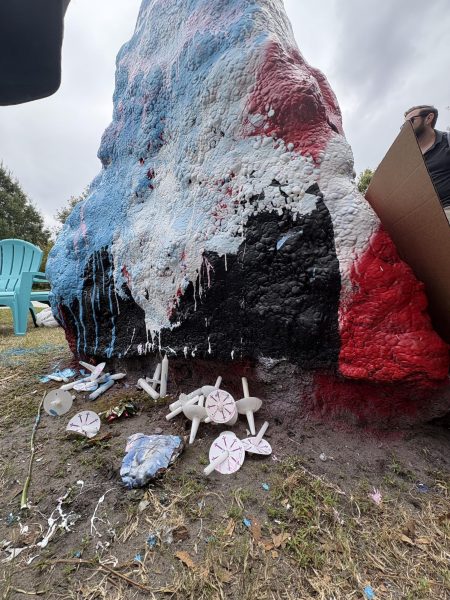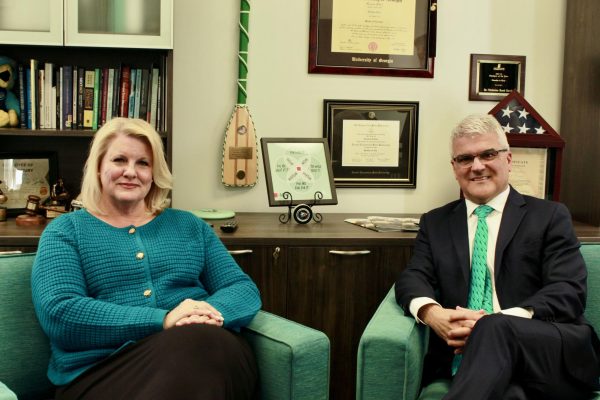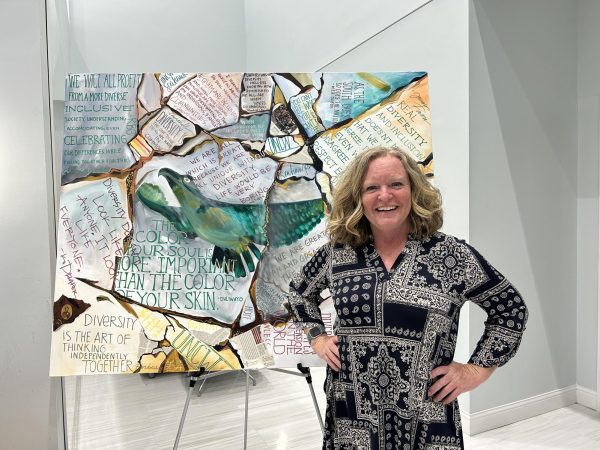UNCW’s Dr. Ushijima discovers effective probiotic treatment for stony coral tissue loss disease
On Thursday, April 6, UNCW Biology and Marine Biology assistant professor Dr. Blake Ushijima and his colleagues published a paper detailing their discovery of the first bacterial probiotic that can effectively treat and prevent stony coral tissue loss disease (SCTLD). An ongoing outbreak of SCTLD in the Caribbean Ocean threatens to eradicate many coral species in the region. If left untreated, it could prevent the areas’ reefs from providing crucial habitats for marine life, protection from storms and erosion and opportunities for human jobs and recreation.
The report, published in Communications Biology, documents the combined efforts of researchers at the Smithsonian Marine Station in Florida and Ushijima’s lab at UNCW. Together, they are working to understand and fight the mysterious disease by studying the microbiomes of healthy and diseased corals.
The probiotic–or beneficial bacteria–that Ushijima found is called Psuedoalteromonas, strain McH1-7. McH1-7 exists naturally on many coral species and produces at least four compounds that inhibit dangerous bacteria and other pathogens. After isolating the probiotic from wild corals and applying it directly to corals in the lab, Ushijima showed that it can reduce mortality rates of SCTLD-infected corals by 20% and provide complete protection for healthy corals for at least 21 days.
“For three weeks, the disease didn’t transmit,” Ushijima said. “In my opinion, that was the most amazing result.”
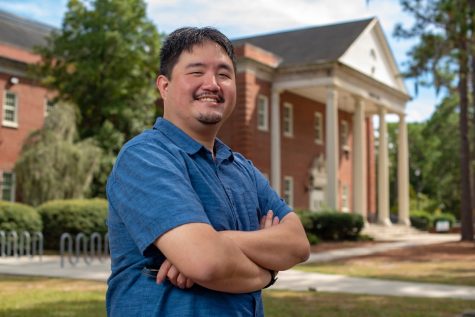
First sighted in 2014, SCTLD has since caused widespread damage to over 20 species of stony corals in Florida and is now spreading aggressively into the surrounding Caribbean reefs. It has recently been observed in Mexico, Jamaica, the Bahamas and other neighboring countries. The high mortality rate, transmission rate and broad range of affected coral species make it uniquely dangerous when compared to other coral diseases.
With 25% of the world’s fish–and thousands of other plants and animals–relying on coral reefs for shelter while they search for food and raise their young, entire marine ecosystems in the Caribbean hinge on the health of the corals that compose them, according to the National Oceanic and Atmospheric Administration. Because climate change and human activity continue to cause oceans to become hotter and more acidic, many corals in the region are already threatened by a phenomenon known as bleaching. While not fatal, this condition results in the corals turning white and becoming dormant, leaving them vulnerable to diseases like SCTLD and increasing the number of corals it may kill.
Once infected with SCTLD, corals quickly become degraded, bleached and slough off of their skeleton in a matter of weeks. “You just start seeing the coral disappear,” Dr. Valerie Paul said. She is the director of the Smithsonian Marine Station at Fort Pierce, Florida. Paul recruited Ushijima for a research fellowship in early 2017 to help her team isolate bacteria that could be responsible for the disease or serve as probiotic treatments for it.
According to Ushijima, who has been researching the disease since then, both SCTLD’s cause and how it spreads remain a mystery. He thinks it may be the result of many complicated factors but has been unable to trace it to any known bacteria or virus. “There is no smoking gun,” he said. “There might be multiple types of pathogens working together.”
Despite these unanswered questions, the disease has traditionally been field-treated with the general antibiotic amoxicillin. While effective in the short term, employing treatments like amoxicillin concerns Paul because antibiotics “seem to stop or slow the disease for a while, but then the corals can get re-infected,” she said. Because amoxicillin relies on only one active compound, this also opens the door for the SCTLD pathogens to develop resistance to it, which would render it ineffective.
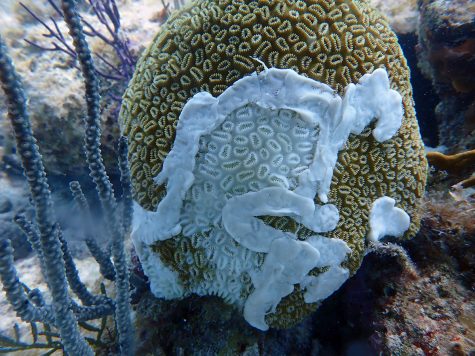
The probiotic strain McH1-7 serves as an alternative and potentially more impactful treatment than amoxicillin. Its ability to protect healthy wild corals from being infected by SCTLD may allow it to be deployed in the field as a means of culling the spread of the disease rather than just minimizing damage to corals that already have it.
Paul is particularly interested in this possibility, and she and her team in Florida are prototyping field methods for using the probiotic on live corals. The team has already demonstrated McH1-7’s protective capabilities on wild reefs when they “basically put a big plastic trash bag over the corals… and squirt the probiotic underneath,” Paul said.
Paul has taken into consideration the possibility of contaminating the environment with the McH1-7 bacteria during these early field trials. After preliminary safety testing and modeling, she thinks the benefits far outweigh the dangers “given the risk of seeing hundreds of thousands of corals die before your eyes,” she said.
Paul hopes that the new probiotic will offer long-term protection for corals in the region and seeks to develop more robust field methods that will allow her team to combat the rapidly expanding geographic scope of the disease. She also believes that the multiple active compounds it produces can prevent pathogens from easily developing resistance to its effects, unlike amoxicillin. Still, she does acknowledge that employing new probiotics will present a challenge in the field and that eliminating the disease completely may not be possible given its rapid spread.
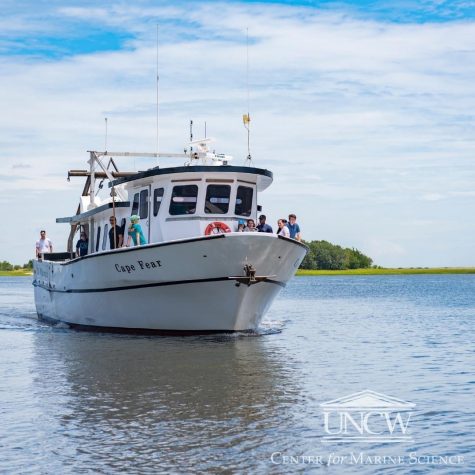
Another benefit of using McH1-7 over amoxicillin, according to Ushijima, is that it allows the coral microbiome to function largely as normal without outcompeting other bacteria. “It doesn’t dominate the microbiome,” he said. “If you think about your gut microbiome, the diversity is what is important.”
Much like us humans, corals rely on a complex relationship between microbes like bacteria and their own tissues that house them to remain healthy and perform their ecological functions. McH1-7 already exists in the microbiomes of some wild corals and can barely be detected even when applied directly to corals in the lab, meaning that it allows other healthy bacteria to coexist with it. This further lowers the possibility that it will cause undesirable environmental effects when used in the field.
The discovery of McH1-7 originally resulted from Ushijima developing new technologies to extract and isolate candidate probiotics from disease-resistant corals on Florida’s reefs. “The traditional method is you plate things out, but you end up with hundreds of colonies,” Ushijima said. “We took that and we automated it.”
After using new laboratory techniques to narrow down possible bacteria, he isolated McH1-7 directly from a coral species known as M. cavernosa. Ushijima then quickly discovered its ability to inhibit the growth of dangerous bacteria and worked with his colleagues to analyze the genes that could allow it to produce its antimicrobial compounds.
While Paul and her Florida-based team are working on developing field deployment techniques, Ushijima wants to focus on finding more probiotics like McH1-7. “This adds another tool,” he said. “It’s not some place where we can stop.”
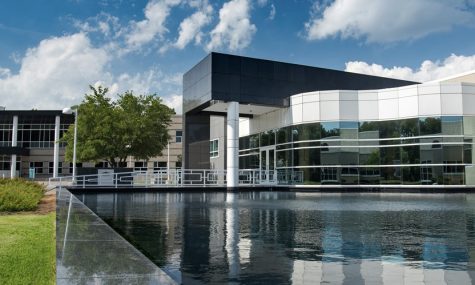
He also wants to learn more about how probiotics like McH1-7 affect their coral hosts. “It’s not just the production of antimicrobial compounds,” Ushijima said. “It could just be the fact that they could be benefitting the host–they could be stimulating the immune system. They could be providing micronutrients to the coral, or they could be inducing a very specific physiological behavior.”
To help him understand how probiotics and SCTLD affect corals on a microscopic level, Ushijima wants to make use of UNCW’s transmission electron microscope (TEM) facility, which allows researchers to see “really up-close cellular pathology–what is actually occurring to the coral cells,” Ushijima said. This will also allow him to better identify new candidates for probiotics and move closer to understanding how SCTLD works.
To learn more about Ushijima’s work with probiotic treatments for SCTLD, follow these links to visit his lab website or his April 6 publication.





